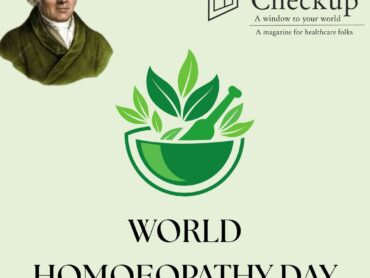The northern region of India was home to the ever-growing and flourishing, Indus Valley civilization, around c. 7000 – c. 600 BCE. As children, we have all learned about it, in our history textbooks. Located on the banks of the Indus River, it was also referred to as the Indus-Sarasvati or Harappan civilization.
Spanning around 1500 kms, the civilization’s total population is thought to have been more than 5 million. Indus Valley Civilization sites have been found near the border of Nepal, in Afghanistan, on the coasts of India, and around Delhi.

In 2011, the journal Current Science, published a report on the first Neolithic skull found in Burzahom, in Kashmir Valley, with multiple trephinations.
Trephination is the oldest craniotomic surgical procedure practiced by mankind, since the Stone Age, by drilling through the skull vault of a living or recently deceased person. It was first noticed in Peru and later in Europe as well around 5000 years ago, and is thought to have spread to Asia ~ 4000 BP in the Bronze Age Jericho of Palestine. It signifies the importance of the migration of people across continents and the practice of medical sciences during this time. The presence of trepanation in the Indus Civilization was suspected about four decades ago on a child’s skull from Lothal and Harappan and Kalibangan skulls.

In the early 2000s, researchers were thrilled to discover the proto-dentistry skills of the people of Mehrgarh. A scholarly article published in Nature in April 2006 reported the earliest evidence of human teeth being drilled in a living person in Mehrgarh. The study’s authors suggest that these findings support the theory that early farming societies in the region practiced proto-dentistry. The paper describes drilled molar crowns from nine adults found in a Neolithic graveyard in Pakistan, dating back 7,500 to 9,000 years. These findings indicate that early farming cultures had a long-standing tradition of proto-dentistry.
Sanitation in the old world:
Cities like Harappa and Mohenjo-Daro featured well-organized layouts with grid patterns, sophisticated drainage systems, and standardized bricks. Homes were equipped with private bathrooms and toilets, which were connected to covered drains. This showed that the people of the Indus Valley not only harbored keen sense of hygiene but also were pioneers in organized city architecture. This efficient waste management system indicates the civilization’s emphasis on cleanliness and public welfare.

Medicinal Plants and Herbal Remedies:
The Harappans had access to a variety of medicinal plants and herbs, which they likely used for treating ailments. The Indus Valley’s geographical diversity provided a rich flora, including plants with potential therapeutic properties. While specific plants and their uses are not explicitly documented, the tradition of using herbal remedies in later South Asian cultures suggests continuity from ancient practices.
Knowledge of anatomy:

Terracotta figurines and seals depicting human anatomy provide further clues about the Harappans’ knowledge of the human body. These artifacts often exhibit detailed representations of various body parts, suggesting that the people had a keen interest in anatomy. Such detailed knowledge would have been essential for both medical and ritualistic purposes.
Health and Nutrition:
The Indus Valley Civilization’s diet, rich in grains, legumes, fruits, and animal products, contributed to their overall health and well-being. A balanced diet, combined with their hygienic living conditions, would have played a crucial role in preventing nutritional deficiencies and related diseases. The prevalence of wells and public baths indicates a focus on clean water access, further supporting community health.
Challenges and Disease Management:
While the Harappans had advanced medical knowledge for their time, they likely faced various health challenges, including infectious diseases, injuries, and possibly epidemic outbreaks. The measures they took in urban planning and sanitation indicate their attempts to manage and mitigate these health risks.
Despite of this advancement, this civilization did dwindle, due to myriad contributing factors. But, what we can learn from them is the positive thinking approach, their ingeniousness and using limited resources to their maximum potential.
http://• www.researchgate.net/publication/264423035
http://• _SCIENTIFIC_CORRESPONDENCE_First_evidence_of_brain_surgery_in_Bronze_Age_Harappa/citations









